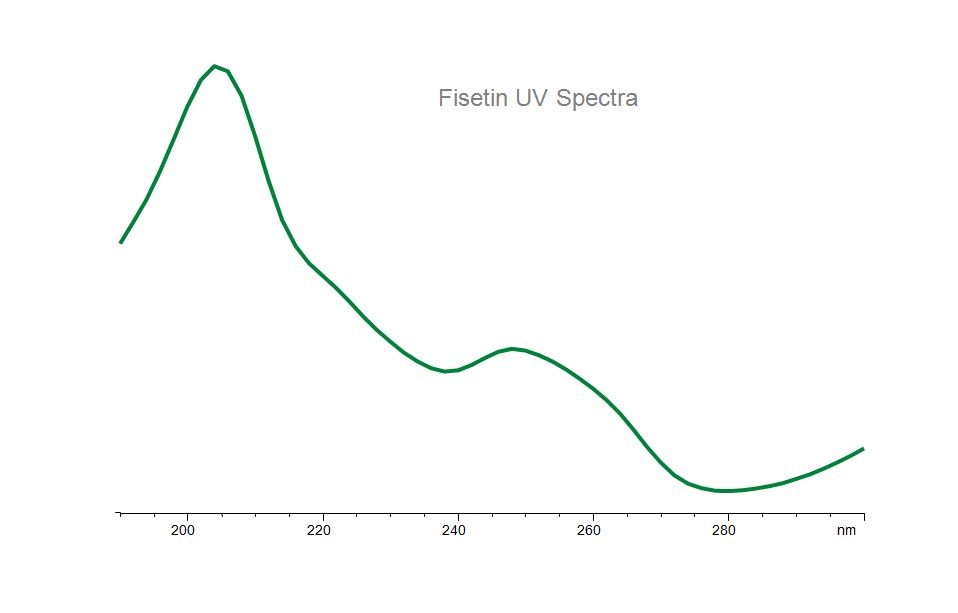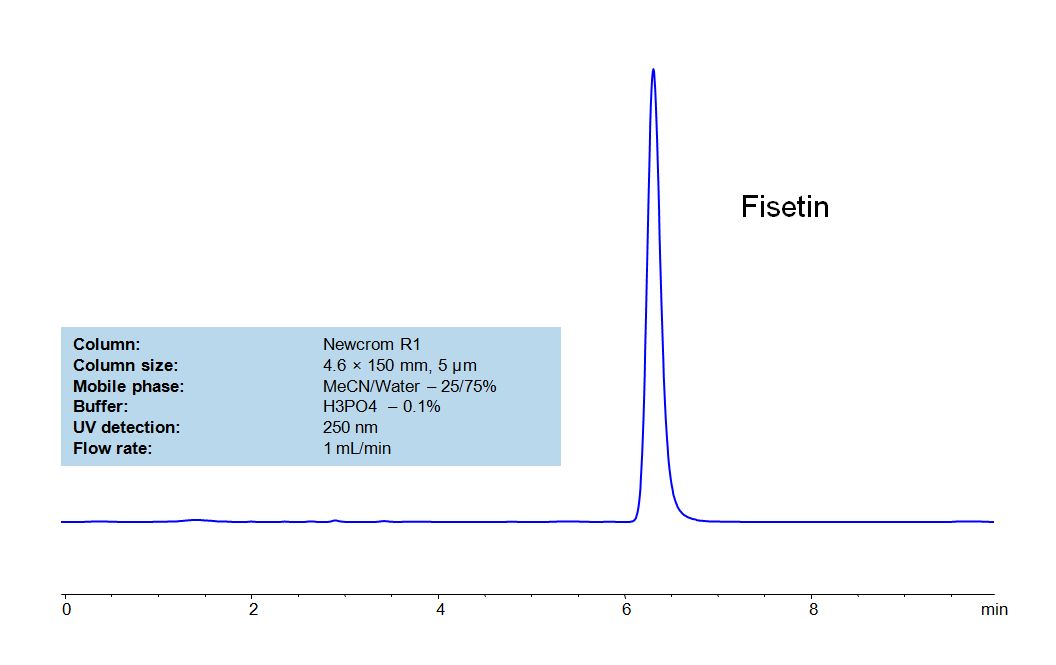| CAS Number | 528-48-3 |
|---|---|
| Molecular Formula | C15H10O6 |
| Molecular Weight | 286.239 |
| InChI Key | XHEFDIBZLJXQHF-UHFFFAOYSA-N |
| LogP | 2 |
| Synonyms |
|
Applications:
HPLC Method for Analysis of Fisetin
October 10, 2018
Fisetin, is a plant polyphenol from the flavonoid group. It can be found in many plants, where it serves as a coloring agent. It is also found in many fruits and vegetables, such as strawberries, apples, persimmons, onions and cucumbers.
Fisetin is a natural flavonoid with various benefits, such as antioxidant, anticancer, neuroprotection effects.
| Column | Newcrom R1, 4.6×150 mm, 5 µm, 100A |
| Mobile Phase | MeCN/H2O – 25/75% |
| Buffer | H3PO4 – 0.1% |
| Flow Rate | 1.0 ml/min |
| Detection | UV, 250 nm |
| Class of Compounds |
Hydrophobic, Ionizable, Coloring agent, Polyphenol |
| Analyzing Compounds | Fisetin |
Application Column
Newcrom R1
The Newcrom columns are a family of reverse-phase-based columns. Newcrom A, AH, B, and BH are all mixed-mode columns with either positive or negative ion-pairing groups attached to either short (25 Å) or long (100 Å) ligand chains. Newcrom R1 is a special reverse-phase column with low silanol activity.
Select options




